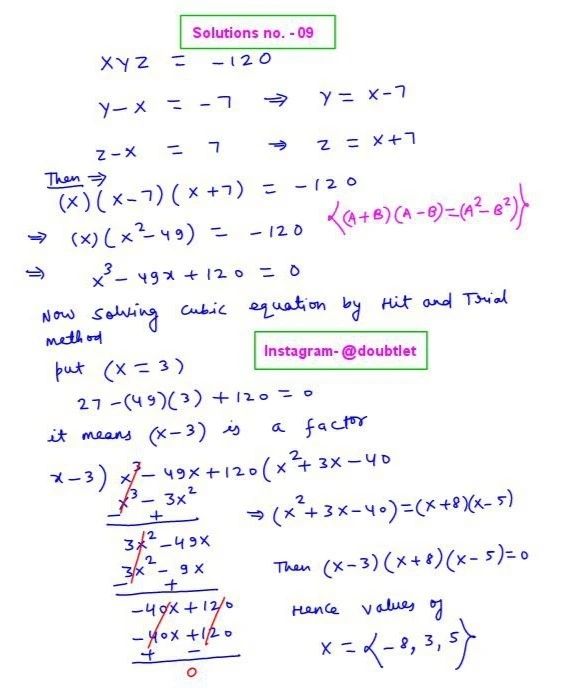









Matrix Division | Efficient Solutions for Dividing Two Matrices
Learn how to divide two matrices step-by-step with our expert guides on matrix division. Explore efficient methods, practical examples, and tips for solving matrix division problems with ease. Perfect for students, professionals, and math enthusiasts.Matrix division is the process of dividing one matrix by another, typically achieved by multiplying a matrix by the inverse of the divisor matrix. Since direct division is not defined for matrices, the operation is performed using matrix inversion and multiplication. This method is commonly used in solving linear systems and various engineering and data science applications.

Neetesh Kumar | October 02, 2024
Share this Page on:
![]()
![]()
![]()
![]()
![]()
- 1. Introduction to the Matrix Division
- 2. What is Matrix Division
- 3. How to Find Matrix Division
- 4. Rules for Matrix Division
- 5. Properties of Matrix Division
- 6. Matrix Division Solved Examples
- 7. Practice Questions on Matrix Division
- 8. FAQs on Matrix Division
- 9. Real-Life Applications of Matrix Division
- 10. Conclusion
1. Introduction to the Matrix Division:
Matrix division is a fundamental concept in linear algebra, but it differs from scalar division. Unlike simple division between numbers, matrix division requires more complex operations and cannot be done directly. Matrix division is typically achieved through matrix inversion and multiplication, and it is essential in solving systems of linear equations and various real-world applications like computer graphics and engineering.
2. What is Matrix Division:
Matrix division refers to finding the equivalent of dividing one matrix by another. However, since division in the context of matrices isn't directly defined, it is performed using matrix inversion and multiplication. In general, for two matrices and , dividing matrix by involves calculating:
This operation works only if matrix is invertible (i.e., has an inverse). If matrix is singular (determinant is zero), matrix division cannot be performed.
3. How to Find Matrix Division:
To divide two matrices and (i.e., to calculate ), follow these steps:
-
Step 1: Ensure matrix is square (same number of rows and columns) and invertible (determinant of is non-zero).
-
Step 2: Find the inverse of matrix , denoted .
-
Step 3: Multiply matrix by the inverse of matrix :
This matrix multiplication gives the result of the "division."
For example, if:
Find , and then multiply to get the result of .
4. Rules for Matrix Division:
Matrix division follows a few key rules that are different from traditional scalar division:
-
Only Square Matrices Can Be Inverted: The matrix you are dividing by (matrix ) must be square and invertible.
-
Non-Commutative: . Unlike scalar division, the order in which matrices are divided matters.
-
Matrix Inverse Requirement: Division by a matrix is only possible if that matrix has an inverse. For singular matrices (determinant ), matrix division cannot be performed.
5. Properties of Matrix Division:
-
Invertibility: Matrix division depends on the divisor matrix's invertibility. If the matrix is not invertible, division is not possible.
-
Associative Property: For matrices , , and :
-
No Commutativity: Matrix division is not commutative. This means .
6. Matrix Division Solved Examples:
Question: 1. Matrix Power for a Matrix
Let’s consider two matrices and :
We are asked to find , equivalent to (multiplying by the inverse of ).
Solution:
Step 1: Find the Inverse of Matrix
To divide by , we first need to find the inverse of .
Matrix .
The inverse of a matrix is given by:
For matrix :
First, calculate the determinant :
Since the determinant is non-zero, is invertible. Now calculate :
Step 2: Multiply by
Now, we compute .
Perform the matrix multiplication:
Final Answer:
The result of is:
Question: 2. Matrix Division for Matrices with Fractional Elements
Given two matrices and :
We are asked to find , equivalent to (multiplying by the inverse of ).
Solution:
Step 1: Find the Inverse of Matrix
Matrix .
The inverse of a matrix is given by:
For matrix :
First, calculate the determinant :
Since the determinant is non-zero, is invertible. Now, calculate :
After solving
Step 2: Multiply by
Now, we compute .
Perform the matrix multiplication:
Now, calculate each element:
Final Answer:
The result of is: or
Question: 3. Matrix Division for Matrices
Let's work with two matrices and
We are asked to find , equivalent to (multiplying by the inverse of ).
Solution:
Step 1: Find the Inverse of Matrix
To divide by , we need to find the inverse of matrix .
Step 1.1: Calculate the Determinant of Matrix
The determinant of a matrix is calculated as:
For matrix :
Step 1.2: Calculate the Inverse of Matrix
The inverse of a matrix is given by:
Substitute the values of , , , and into the formula:
Step 2: Multiply by
Now that we have the inverse of , we can compute .
Perform the matrix multiplication :
To calculate each element in the resulting matrix:
-
Top-left:
-
Top-right:
-
Bottom-left:
-
Bottom-right:
Thus, the product is:
Final Answer:
The result of is: or
7. Practice Questions on Matrix Division:
Q.1: Find for: .
Q.2: Divide the following matrices and verify the result: .
Q.3: Compute for the matrices: .
8. FAQs on Matrix Division:
What is matrix division?
Matrix division refers to dividing one matrix by another, which is done using matrix multiplication and inversion. Specifically, for matrices and , division is represented as , where is the inverse of matrix .
Can you directly divide two matrices?
No, direct division is not defined for matrices. Instead, matrix division is performed by multiplying the first matrix by the inverse of the second matrix.
When is matrix division not possible?
Matrix division is impossible if the divisor matrix is non-invertible (i.e., its determinant is zero) or is non-square. A matrix must be square and have a non-zero determinant to be inverted.
What is the role of the matrix inverse in division?
The matrix inverse is crucial in division. To "divide" matrix by matrix , you need to calculate (the inverse of ) and then multiply it by . This inverse ensures the operation is mathematically valid.
Is matrix division commutative like scalar division?
No, matrix division is not commutative. This means that and the order of operation matter in matrix division.
Can non-square matrices be divided?
No, matrix division requires the divisor matrix to be square (the same number of rows and columns). Non-square matrices do not have an inverse, making division impossible.
How is matrix division used in solving linear equations?
Matrix division is commonly used to solve systems of linear equations. For a system , the solution can be found by dividing both sides by , which involves multiplying by the inverse of , i.e., .
What is the difference between element-wise division and matrix division?
Element-wise division directly divides corresponding elements of two matrices, while matrix division refers to multiplying a matrix by the inverse of another. Element-wise division does not involve matrix inversion and follows simpler scalar division rules.
9. Real-Life Applications of Matrix Division:
Matrix division has a variety of real-life applications, especially in solving systems of linear equations and problems in engineering, physics, and computer science:
-
Control Systems: In control theory, matrix division calculates system responses.
-
Computer Graphics: Matrix operations, including division, are used to perform transformations and manipulate objects in 3D space.
-
Data Science: In data fitting and regression analysis, matrix division (through matrix inversion) is crucial in solving optimization problems.
10. Conclusion:
Matrix division is a powerful mathematical operation but differs significantly from regular scalar division. It relies on matrix inversion and multiplication and can only be performed when the divisor matrix is invertible. Understanding matrix division and its properties are essential for solving advanced linear algebra problems and applying these concepts in real-world scenarios such as engineering, computer science, and physics.
If you have any suggestions regarding the improvement of the content of this page, please write to me at My Official Email Address: [email protected]
Are you Stuck on homework, assignments, projects, quizzes, labs, midterms, or exams?
To get connected to our tutors in real time. Sign up and get registered with us.
Cofactor Matrix Blog
Matrix Formula Sheet
Linear Algebra Calculators
Matrix Inverse Calculator
Cramer's Rule Calculator
Blog Information
Blog Author: Neetesh Kumar
Blog Publisher: Doubtlet
Comments(0)
Your comment will be reviewed before it is published.



Leave a comment